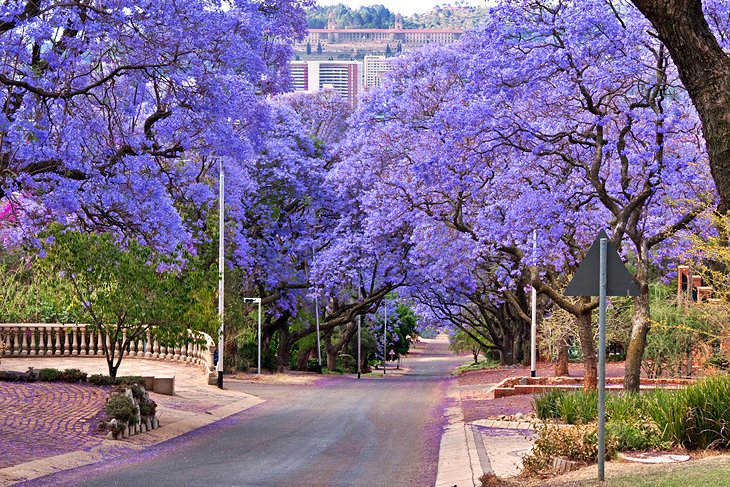Some Known Factual Statements About Johannesburg North Attractions
Some Known Factual Statements About Johannesburg North Attractions
Blog Article
8 Simple Techniques For Johannesburg North Attractions
Table of ContentsNot known Details About Johannesburg North Attractions The 8-Minute Rule for Johannesburg North AttractionsSome Known Details About Johannesburg North Attractions The Greatest Guide To Johannesburg North AttractionsThe Facts About Johannesburg North Attractions UncoveredThe Best Guide To Johannesburg North Attractions
The city expanded on the side of the Witwatersrand Main Coral reef, a below ground stratum of gold-bearing quartz-silica corporation that arcs for hundreds of miles underneath the Highveld - Johannesburg North attractions. Many of the gold mines in the city stopped operation in the 1970s, however in its day the Witwatersrand gold market accounted for even more than 40 percent of the world's annual gold production.Johannesburg has a temperate climate. Summer season temperature levels average regarding 75 F (24 C); winter season temperatures average about 55 F (13 C) and just periodically dip below freezing. The city appreciates about eight hours of sunshine each day in both winter season and summertime. Rainfall standards about 28 inches (700 millimetres) per year, yet the total differs substantially from year to year.
What rainfall the city receives falls nearly solely in the summer season months, commonly in amazing late-afternoon electrical tornados. Air contamination poses a significant trouble, specifically in the winter season, when thermal inversions hinder the westward circulation of air from the Indian Ocean. Pollution is most extreme in the largely worked out Black townships on the city's perimeter, where numerous homeowners still rely upon coal for gas.

More About Johannesburg North Attractions
The balance of the city is occupied by whites. Accommodation varies in character and top quality. Soweto is notorious for its unlimited rows of municipally developed, two-room matchbox homes, yet it additionally has a few flourishing territories as well as teeming squatter camps, where tens of thousands live without water, power, or cleanliness centers.
Physical development, although somewhat limited by transportation, continued swiftly as migration to South Africa, and Johannesburg specifically, increased considerably. This problem was addressed in the 1930s when the vehicle was presented in mass production to South Africa. Vehicles were, generally, constrained to the well-off, and allowed them to relocate to the north of the city and commute right into the centre.
The majority of bad suburbs were blended, with bad blacks and whites living together, although the affluent residential areas were typically booked for whites.
The previous system of eleven numbered regions was reorganised in 2006. Marshalltown, as seen from the top of the Carlton Centre. The M1 and M2 run visit this site right here behind the click to find out more buildings, and the southern residential areas extend past the highway boundary. The inner city of Johannesburg is situated within the city's Region F. The estimated population of the region is 200,000, [] yet the number of people residing in the central city on an informal basis is unidentified, as many are illegal aliens. The majority of higher-income residents and white people have transferred to the north suburbs and have actually been changed by lower-income black people. The unemployment, education, and age accounts of the area are all unidentified, as a result of the trouble of acquiring trustworthy details concerning the location.
The Best Guide To Johannesburg North Attractions
Centred on the CBD, the area includes the residential areas of Yeoville, Bellevue, Troyeville, Jeppestown, and Berea to the eastern. To the west it infects Pageview (Johannesburg North attractions) and Fordsburg. There are little industrial parks to the south, such as City West-Denver and Benrose. Around 800,000 commuters go through the central city every day, and it works as a regional shopping node for visitors from the southern suburbs. Yeoville and Bellevue have a mix of house structures and solitary household systems on little great deals. The region is located on a hilly divide that ranges from eastern to west. One of the most conspicuous geographic feature is Observatory Ridge, which is named for the huge observatory located on it. The recreational spaces are no much longer made use of, due to security troubles.

Johannesburg Stadium, a training ground for both the Golden Lions and Orlando Pirates, is adjacent. The eastern residential areas of Johannesburg lie in the city's 7th [] and 9th [] areas. The area is also functionally integrated with East Rand border towns beyond the official border of Johannesburg, such as Bedfordview and Edenvale (both part of Ekurhuleni Metropolitan Town).
Johannesburg North Attractions Fundamentals Explained
The eastern residential areas are some of the earliest locations of Johannesburg, there are big communities of Jewish and various other European backgrounds, the majority of the population is English speaking. There are 3 golf courses as well as a number of safeguarded ridges with viewsites.
Initially built to house male migrant workers, several have been boosted as homes for pairs and family members. The residential area was not traditionally enabled to create employment centres within the area, so virtually all of its locals are commuters to various other parts of the city.
Johannesburg North Attractions - The Facts
The N1 Western Bypass connects the northern suburbs with the north-western residential areas. The houses in the north suburban areas are mainly formal, with no substantial locations of informal housing, or housing that lacks a long-term structure. Although this is a well-known area, there is a trend of land use modification from property to industrial, especially along main arterial roadways and around established nodes.
Roadways to the eastern and west are much less well established, as there are no freeways taking a trip in that direction. In the direction of the northern border of the city, the density of development lowers, leaving big areas of primitive land around Midrand.
Unknown Facts About Johannesburg North Attractions
, which is located on a hill neglecting the inner city and Hillbrow.
Report this page